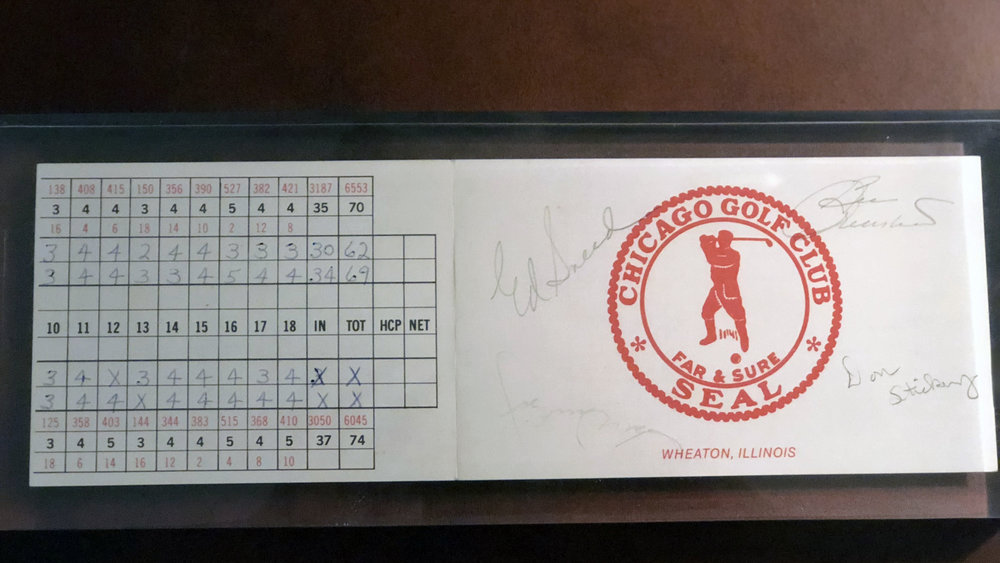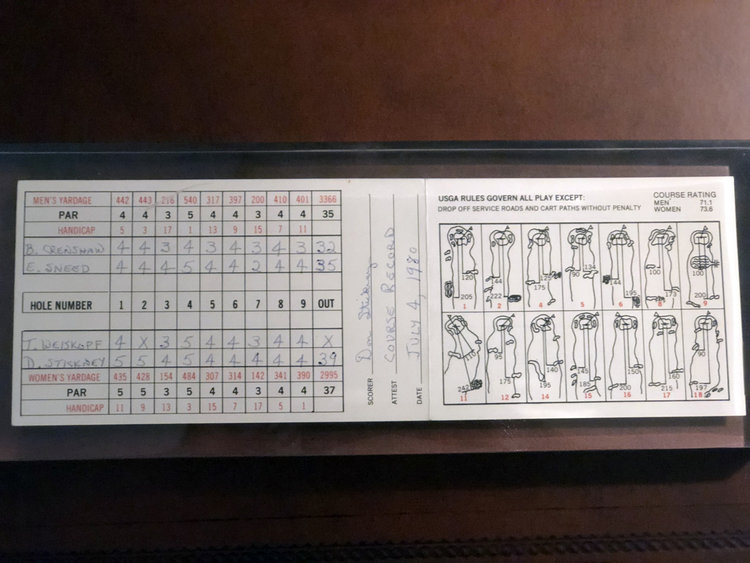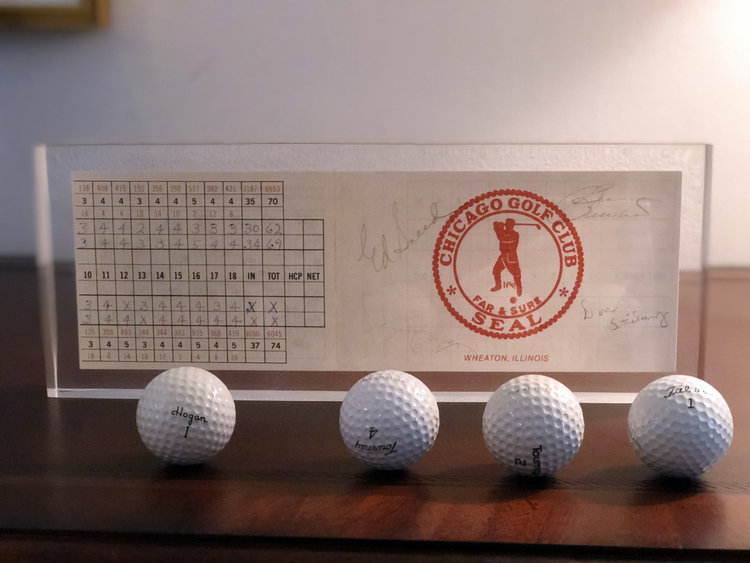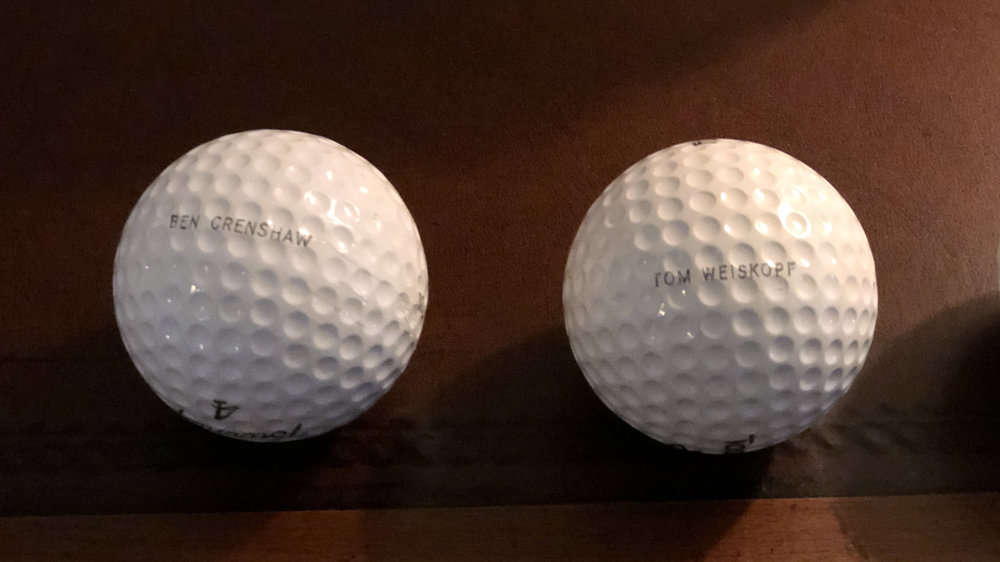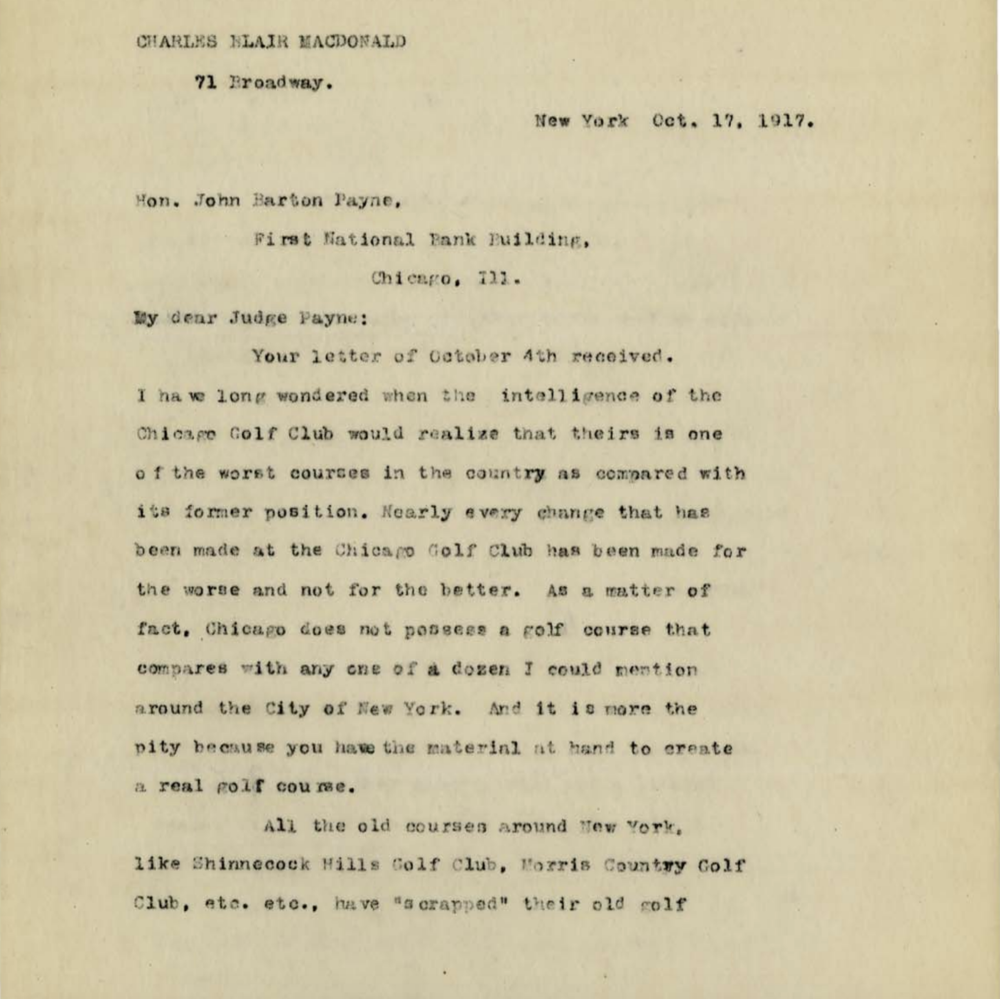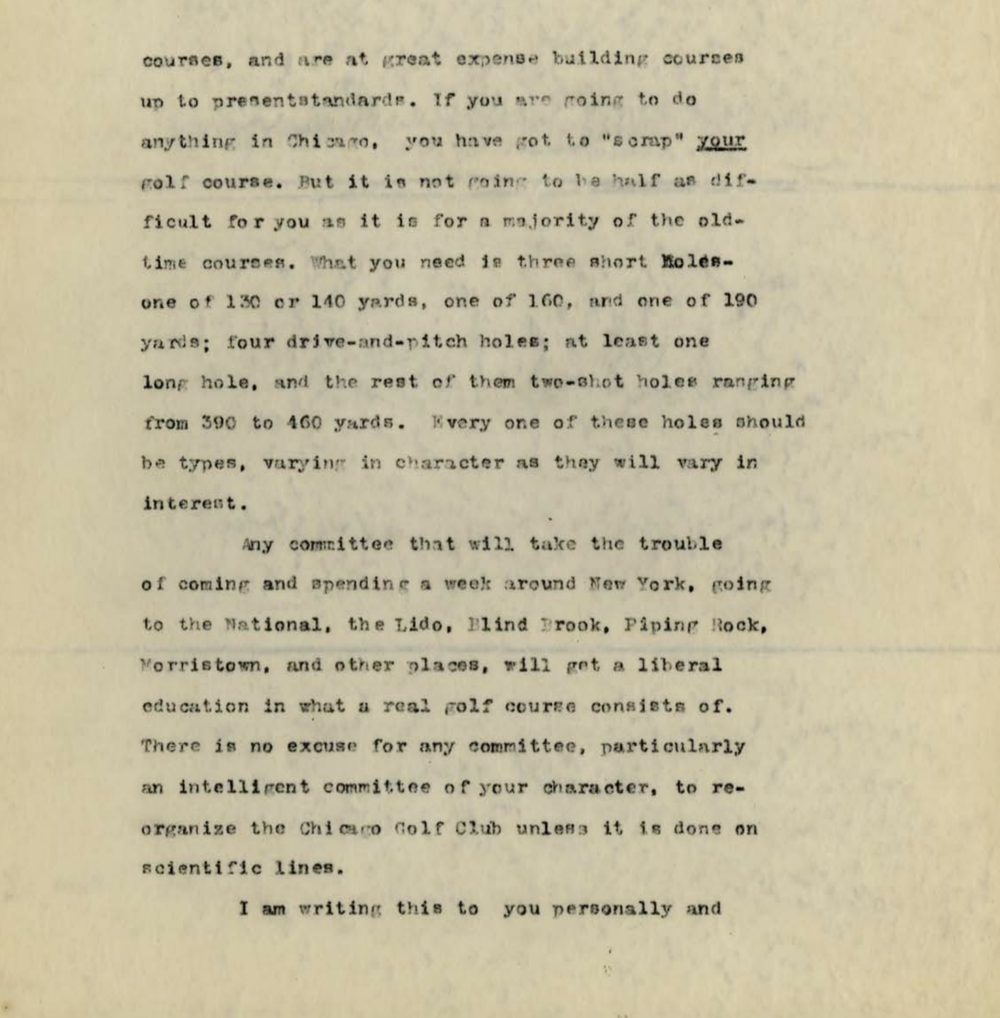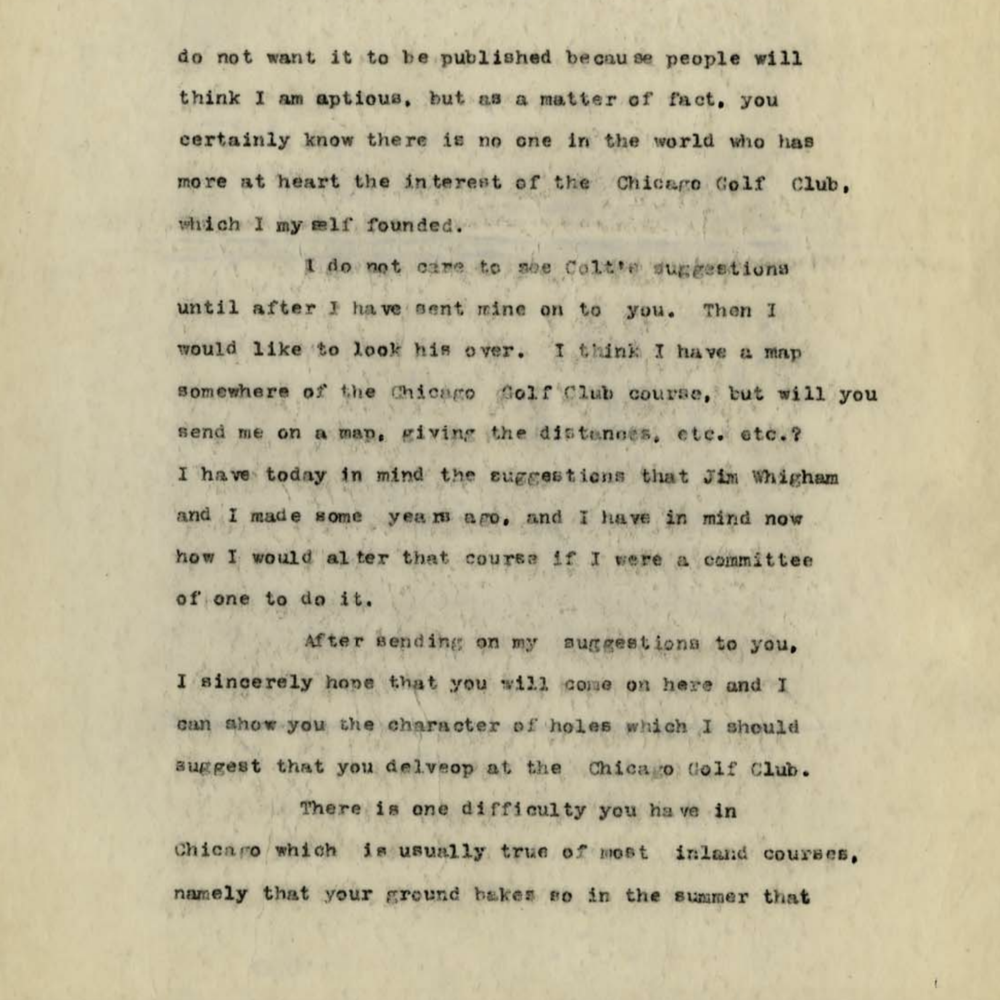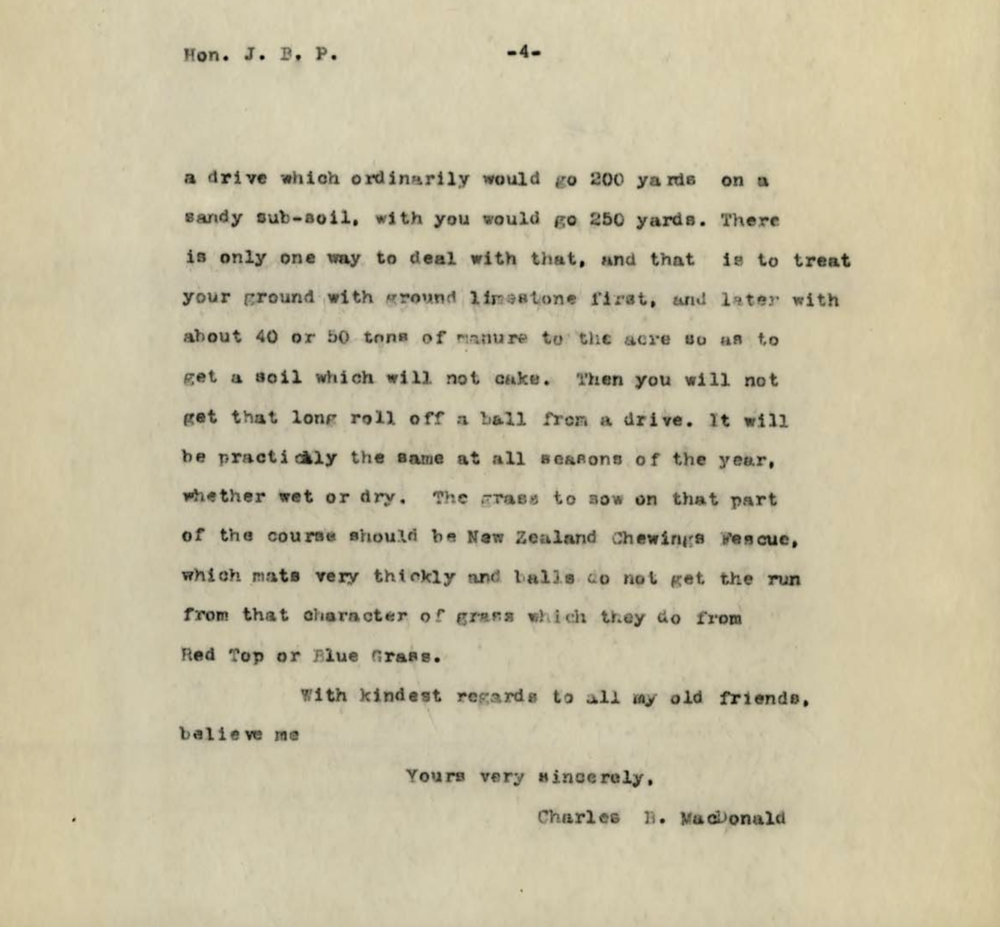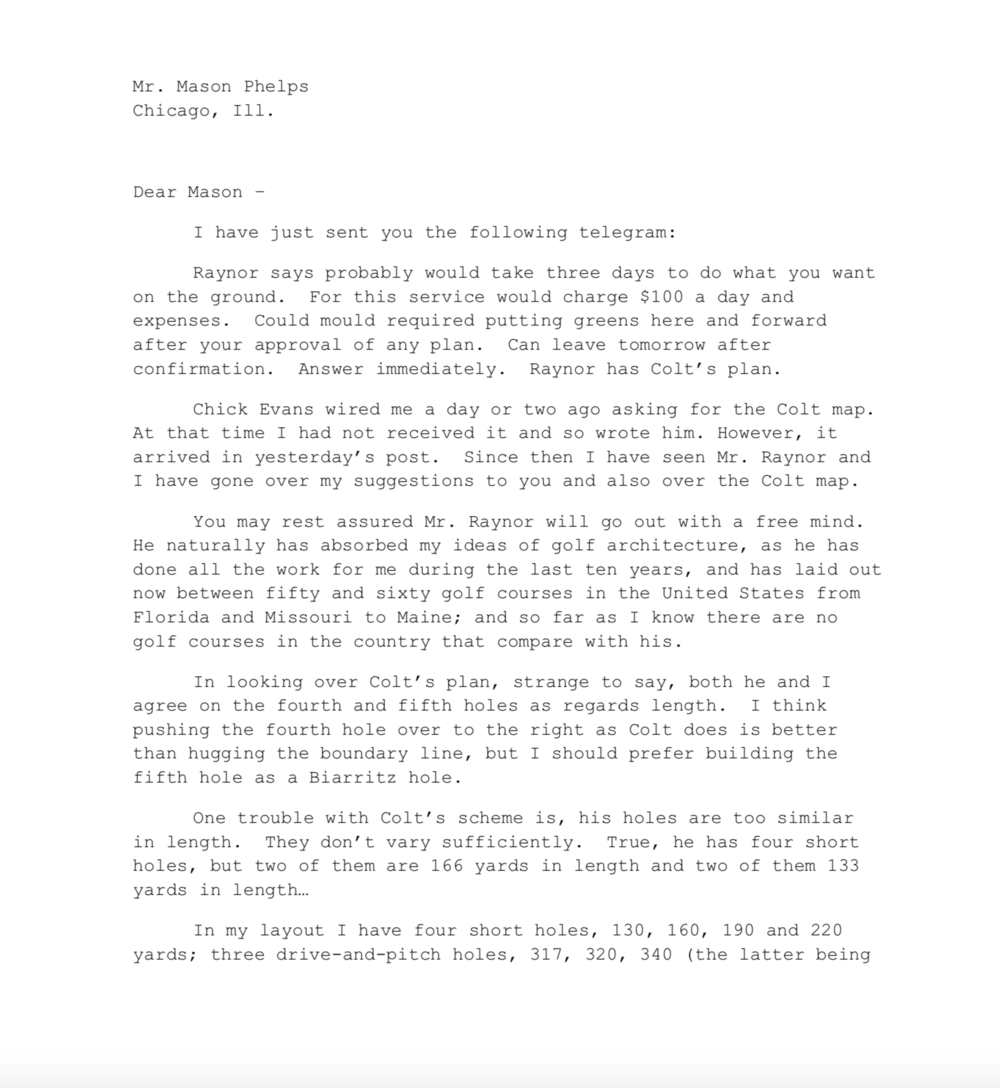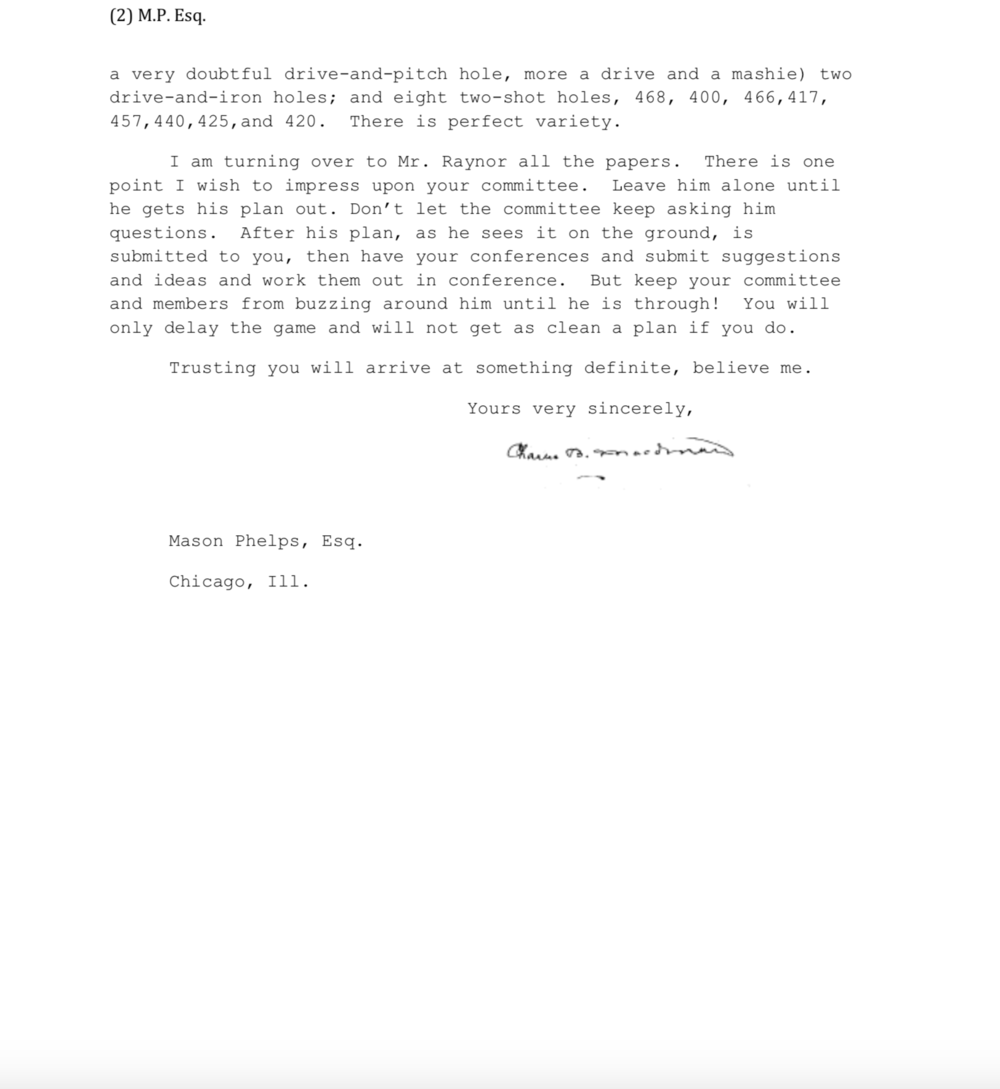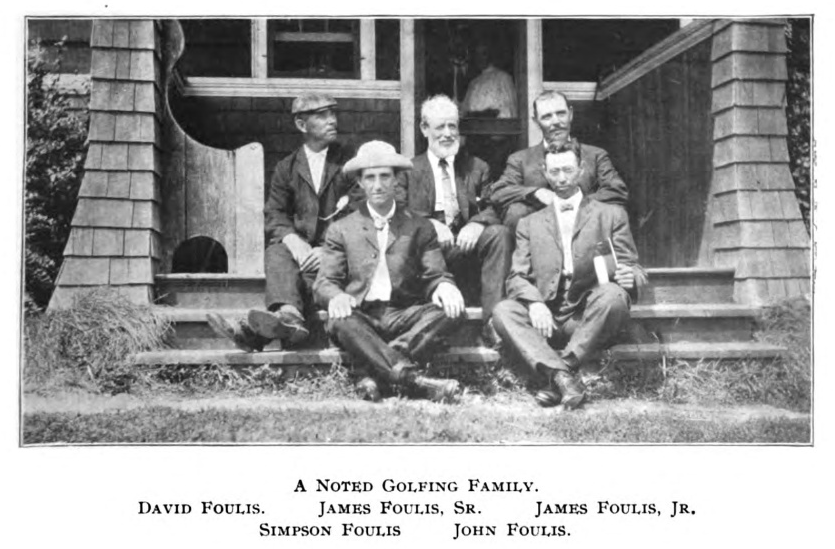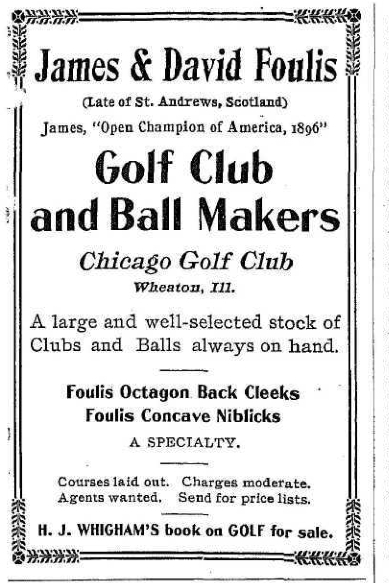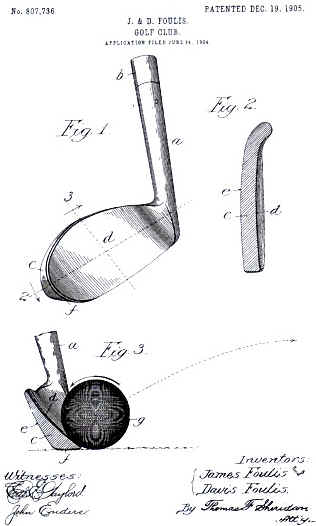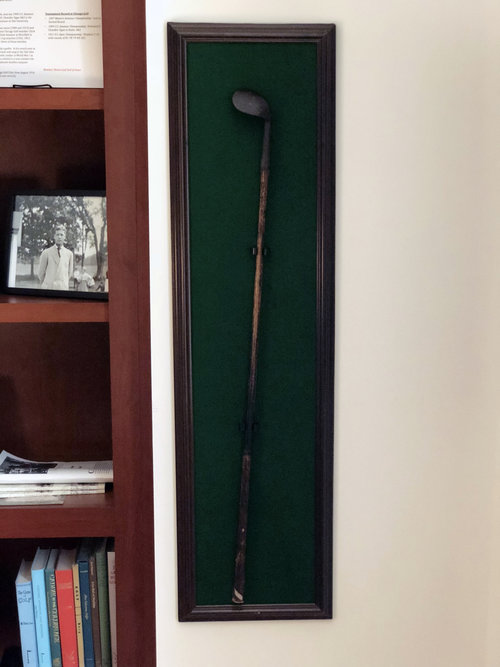Chicago Golf Club owns the distinction of being the first 18-hole golf course in the United States. Grandfather of U.S. golf, C.B. Macdonald was instrumental in founding the storied club and designing the original golf courses. The club is one of the five founding member clubs of the USGA and has hosted USGA championships across three centuries. These are the historical facts that viewers will hear all week during coverage of the 2018 U.S. Senior Women’s Open. I toured through the Chicago Golf Club’s history room with club historian John Moran to uncover a few of the lesser-known facts and items of the club’s history.
(All photos and historical materials were provided by Chicago Golf Club)
The pseudo course record
Chicago Golf Club’s competitive course record of 65 is held by member Pete Keller. The “other” course record is held by 2-time Masters champion Ben Crenshaw. Gentle Ben fired a 62 playing with Tom Weiskopf, CGC pro Don Stickney and Ed Sneed. The score didn’t hold because Crenshaw hit a second ball off the first tee, which he didn’t end up playing. The club has the card and the balls from the round.
The Raynor redesign
Chicago Golf Club’s original course and land were in Downers Grove, IL, some of which still remain today. The club quickly moved over to its current Wheaton location where C.B. Macdonald built a new 18-hole golf course. This course held the 1897, 1900 and 1911 U.S. Opens, the 1897, 1905, 1909 and 1912 U.S. Amateurs and the 1903 U.S. Women’s Amateur. In 1917, C.B. Macdonald, who at the time was living in New York, decided to voice his displeasure to the club in a letter.
This letter would eventually start the process of Chicago Golf Club being redesigned to its current day state.
My initial takeaway of this letter is the tone is unbelievable! Could you imagine an email today written like this? Additional thoughts on the details:
- Variety! What Macdonald describes here with the different lengths ensures a golf course that forces players to hit a wide range of shots.
- I would love to see the Harry Colt plans.
- Macdonald asked committee members to come visit the great courses of Long Island. The same holds true today. Every greens committee that is considering making changes to their golf course should spend time at the aspirational golf courses in its area. Education and exposure to world-class design is a necessary step to any restoration.
In this next letter, CBM stes up Seth Raynor to do the renovation work to the course.
More takeaways from C.B.’s infinite wisdom:
- Sound advice to any greens committee – “I am turning over to Mr. Raynor all the papers. There is one point I wish to impress upon your committee. Leave him alone until he gets his plan out. Don’t let the committee keep asking him questions. After his plan, as he sees it on the ground, is submitted to you, then have your conferences and submit suggestions and ideas and work them out in a conference. But keep your committee and members from buzzing around him until he is through! You will only delay the game and will not get as clean a plan if you do.”
- Earlier, Macdonald boasts of Raynor’s achievements, which include laying out courses “from Florida and Missouri to Maine.” There are no known existing or closed designs from Raynor in Maine. What is the Raynor course in Maine, and does it still exist?
- Once again, Macdonald harps on variety, or lack there of, in Harry Colt’s plans for Chicago Golf Club. Variety is one of my favorite aspects of Raynor and Macdonald’s designs. During a recent round at a Raynor course, I hit every single iron in my bag.
The result of Raynor’s work is today’s golf course. It’s a masterful routing that takes advantage of the course’s modest property. Chicago Golf has a neat overlay of the old golf course compared to today’s course for those interested in what Chicago Golf used to be. More on Chicago Golf Club will be posted Tuesday 7/10.
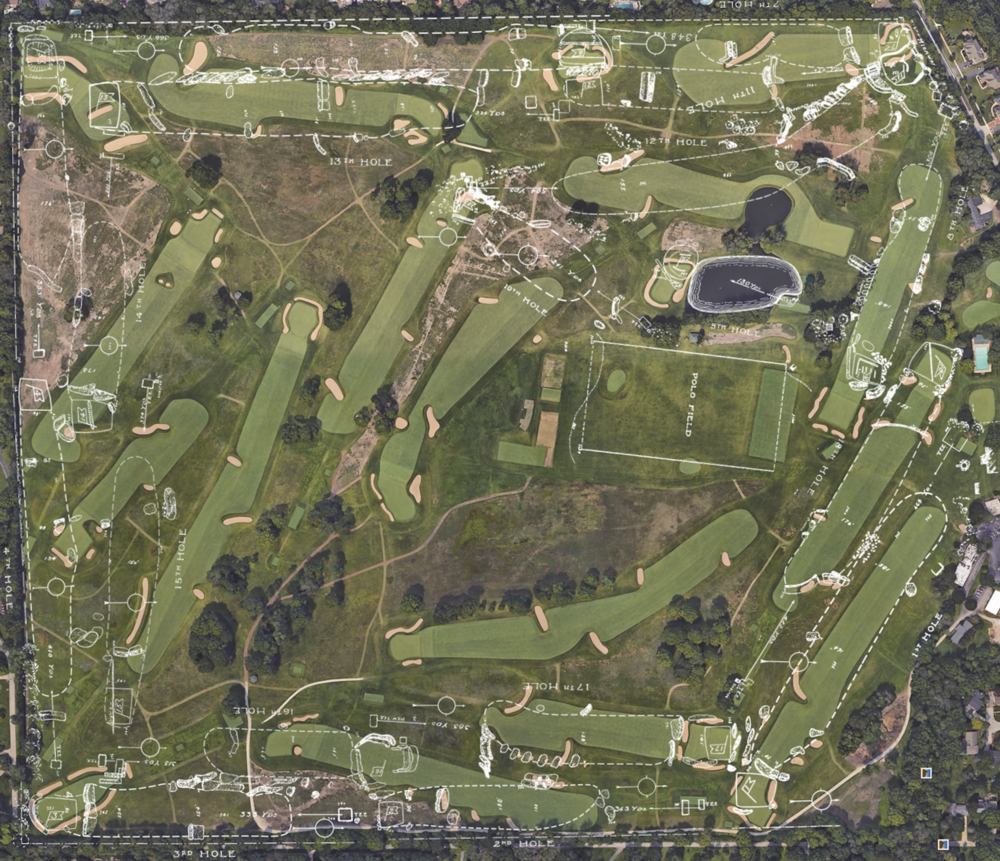
The Foulis family
C.B. Macdonald is synonymous with Chicago Golf Club and casts a shadow over a couple of their other early characters. The Foulis family was instrumental in the early development of the game in America. The eldest, James Sr., immigrated to the U.S. after working as the foreman in Old Tom Morris’s shop. Along with James Sr. came his sons, James Jr. and David, who were the pros at Chicago Golf Club. James Jr. won the 1896 U.S. Open at Shinnecock Hills Golf Club. Beyond being the club’s professionals, James and David were also world-renowned club makers. The pair ran their shop out of the Chicago Golf Clubhouse, where they patented the Mashie Niblick, one of which can be found in the club’s history room.
The man behind the scholarship
Another golf icon that Chicago Golf shaped was Chick Evans, Chicago’s most famed golfer. Evans’ crowning achievement was winning the “Double Major” in 1916 (U.S. Amateur & U.S. Open), which he did as a member at Chicago Golf, practicing before and after work. Evans also caddied at Chicago Golf during the 1903 U.S. Women’s Amateur for finalist J Anna Carpenter.
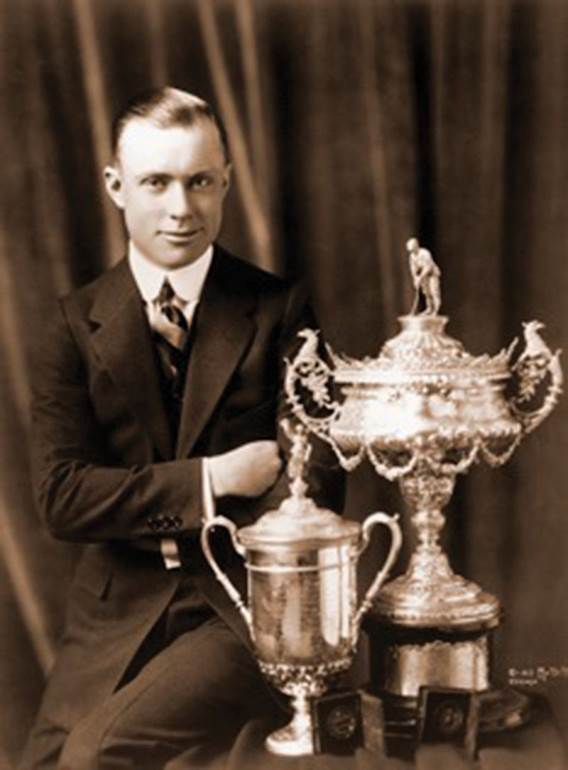
Chick Evans with the U.S. Open and Amateur trophies
Trains, planes and golf courses?
An interesting trend with the early clubs in Chicago were their close proximity to the train lines. Oftentimes, a train stop would magically pop up next to a new golf course. This was the case with both Chicago Golf’s original property in Downers Grove and its current day location. The train line played a pivotal role in the development and popularity of the game in Chicago due to the ease of commute to and from the city. The train made it possible for Evans (who worked in the city) to practice in the mornings and afternoons.


 by
by 